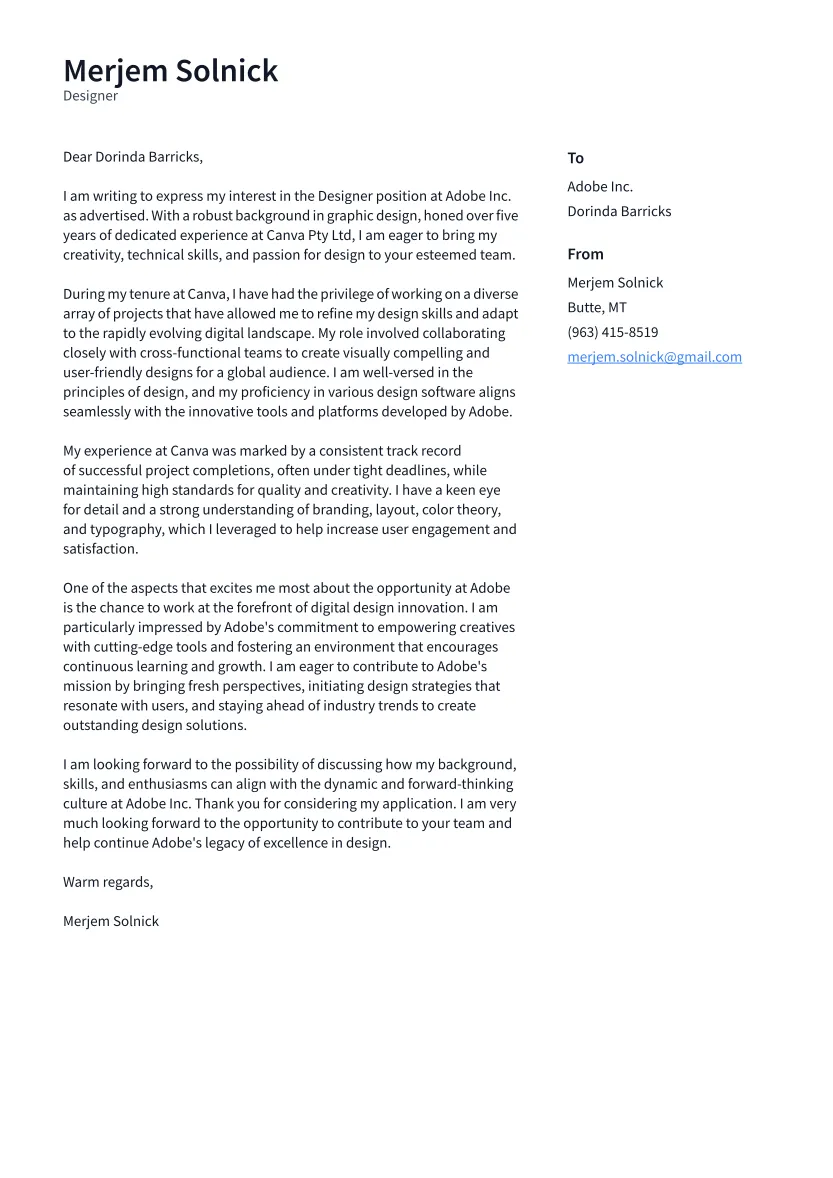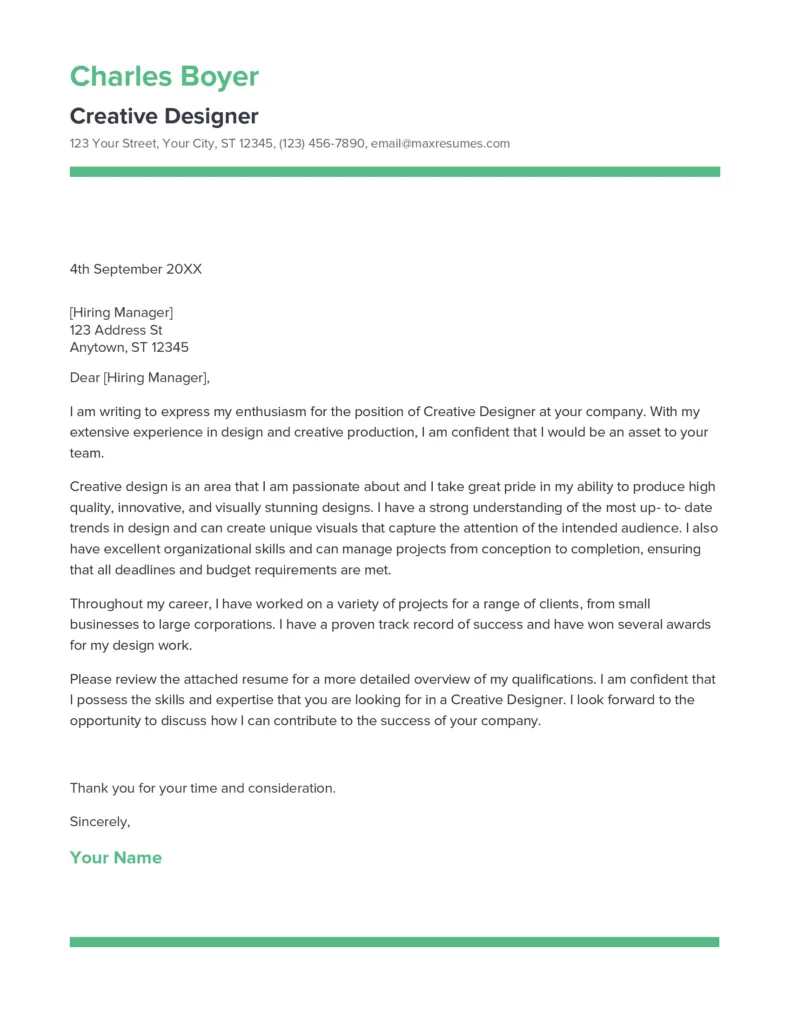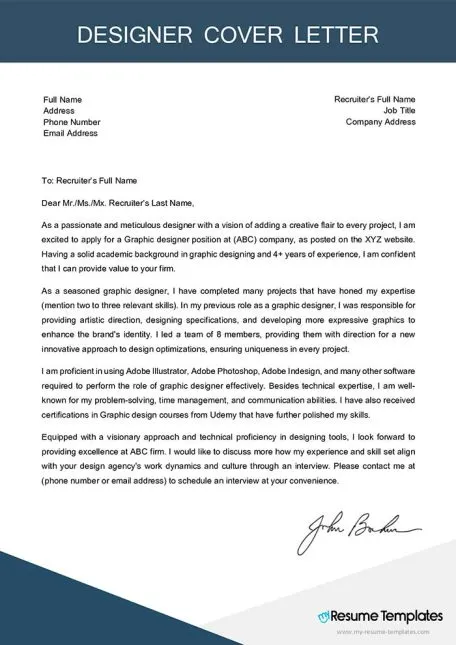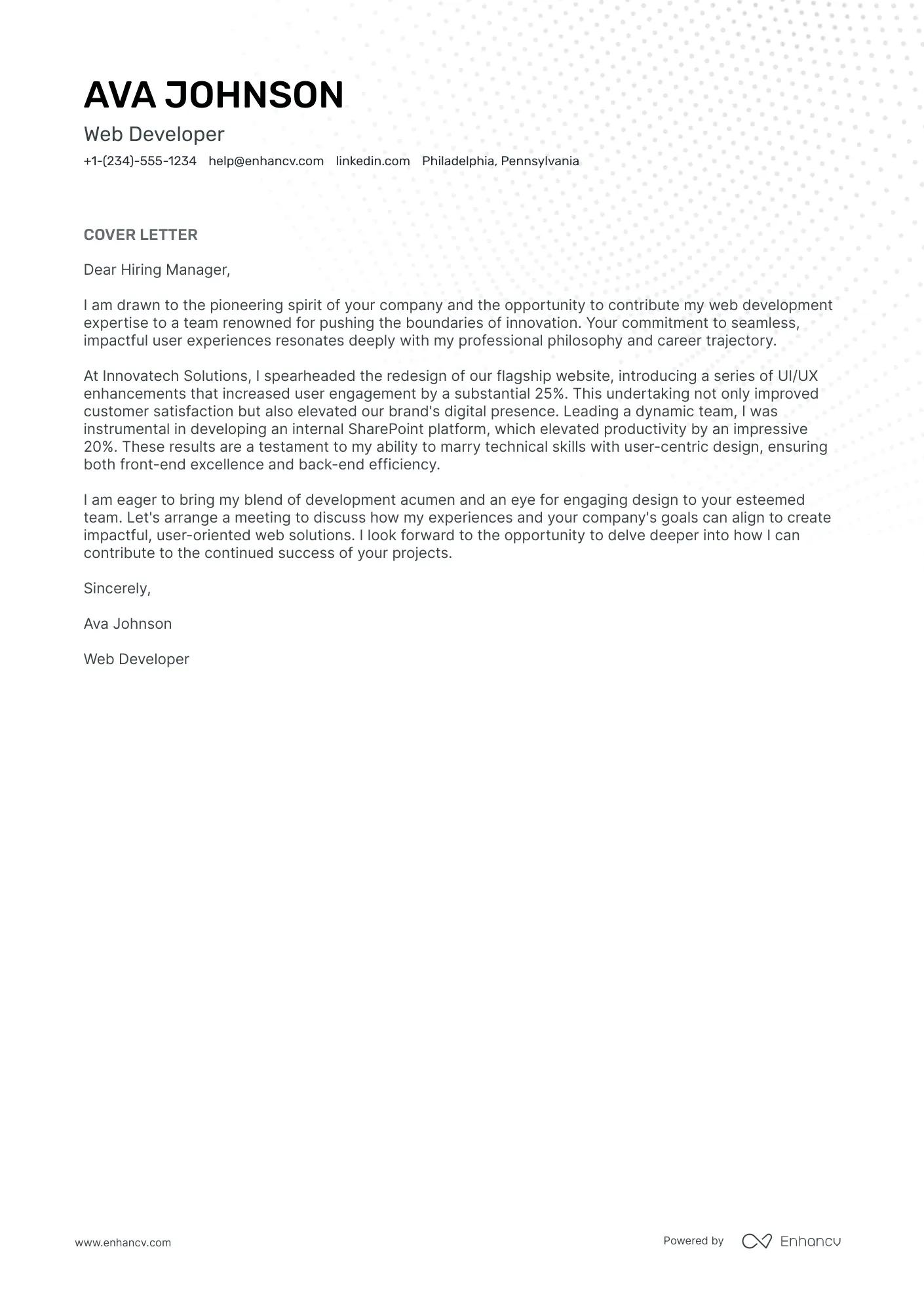Cover Letter Design Secrets Unveiled
In the competitive world of design, a compelling cover letter is your first impression. It’s your chance to showcase not only your skills but also your personality and design aesthetic. This article unveils the top 7 secrets to crafting cover letters that capture the attention of potential employers and land you your dream design job. We’ll delve into the essential elements, from highlighting your design skills and showcasing your portfolio effectively to structuring your letter for maximum impact. With these secrets, you can transform your cover letter from a mere formality into a powerful tool that elevates your application and sets you apart from the competition. A well-designed cover letter is a testament to your design capabilities, demonstrating your understanding of visual communication and your ability to create a cohesive narrative that resonates with the hiring manager. Get ready to transform your approach and unlock the secrets to design cover letter success.
Highlighting Your Design Skills
Your cover letter is the ideal space to highlight your key design skills. Go beyond simply listing your software proficiencies; instead, demonstrate how you’ve applied these skills in real-world projects. Quantify your achievements whenever possible. For example, instead of saying you ‘designed websites’, mention that you ‘increased user engagement by 20% through redesigning websites’. Showcase your problem-solving abilities by describing how you overcame design challenges. Tailor the skills you emphasize to match the specific requirements of the job description, and use action verbs to make your accomplishments sound even more impactful. Your cover letter should be a concise yet impactful narrative of your design prowess, demonstrating your understanding of design principles and your ability to deliver results. Remember to focus on the skills that align with the job’s requirements, tailoring your letter to show that you are a perfect fit.
Showcasing Your Portfolio Effectively

Your portfolio is the cornerstone of your application, and your cover letter should guide the reader towards it. Don’t just mention that you have a portfolio; instead, highlight specific projects that align with the job requirements. Briefly describe each project, focusing on your role and the results achieved. Include links to your online portfolio or provide instructions on how to access your work. If you’re applying for a specific role, like a UI/UX designer, be sure to point to relevant projects within your portfolio. In the cover letter, you can succinctly describe how these projects showcase your skills in user interface design, user experience design, or any other specialized areas. Emphasize your design process, from initial concepts to final implementation, demonstrating your design thinking and creative process. This strategic approach guides the reader to your portfolio, ensuring they understand the value of your work and are impressed by your abilities, boosting the chances of securing an interview.
Structuring Your Cover Letter
A well-structured cover letter is essential for readability and impact. Begin with a strong opening that grabs the reader’s attention. Then, highlight your skills and experience in the main body, followed by a compelling closing that reiterates your interest. Use clear and concise language, avoiding jargon or overly complex sentences. Break up the text into easily digestible paragraphs, and use bullet points to highlight key accomplishments or skills. Consider using a template, but always customize it to reflect your unique personality and design style. Ensure your cover letter has a professional layout, with a clean and modern design. Your cover letter structure should also demonstrate your ability to organize information logically, a critical skill in any design role. Always proofread meticulously for any grammatical errors or typos, ensuring a polished final product. The structure of your cover letter is a crucial element in making it memorable and effective.
The Importance of a Strong Opening
The opening of your cover letter is your first and often only chance to make a lasting impression. It needs to be captivating and immediately grab the reader’s attention. Avoid generic openings, such as ‘Dear Hiring Manager’. Instead, personalize your letter by addressing the hiring manager by name, if possible. State the position you’re applying for and briefly explain why you’re interested in the role and the company. Highlight something that sparked your interest, whether it’s a specific project, the company’s mission, or an aspect of their culture. A strong opening establishes your enthusiasm and demonstrates that you’ve done your research. Your opening should act as an introduction, setting the tone for the rest of your letter. Make it succinct, yet powerful, compelling the reader to continue reading. A unique and creative opening can be the perfect way to stand out and make your cover letter a success.
Crafting a Compelling Body

The body of your cover letter is where you highlight your skills, experience, and accomplishments. Use this section to provide detailed examples of your work and explain how your skills align with the job requirements. This is where you can demonstrate your knowledge of design principles, tools, and processes. Use action verbs to describe your contributions and quantify your achievements whenever possible. Show, don’t just tell, by providing specific examples that showcase your abilities. Structure your body paragraphs to follow a logical flow, with clear transitions between your skills, achievements, and experiences. Showcase your personality through a tone that is professional yet also authentically you. Aim for a good balance between substance and brevity, ensuring the body of your cover letter is engaging and focused on your strengths. The body of your cover letter must be tailored to the specific requirements of the role, illustrating how your experience makes you the ideal candidate.
Closing with Impact
Your closing paragraph should leave a lasting impression and reinforce your interest in the position. Reiterate your enthusiasm and summarize your key qualifications. Express your interest in an interview and include your contact information. Avoid generic phrases like ‘Thank you for your time’. Instead, express gratitude in a more personalized way. Ensure your closing is professional, yet shows your personality and excitement. A well-crafted closing reinforces your qualifications and creates a lasting positive impression. Conclude with a clear call to action. This might include a direct invitation to schedule a time to discuss your application further. End with a professional sign-off, such as ‘Sincerely’ or ‘Best regards’. Ensure your contact information is accurate and easily accessible.
Key Takeaways for Designers
- Tailor each cover letter to the specific job and company
- Quantify your achievements whenever possible
- Highlight relevant skills and experiences
- Showcase your personality and design style
- Proofread carefully for errors
- Include a strong portfolio link and project highlights
- Use a clear and concise structure
- Craft a compelling opening and closing
Cover Letter Examples to Learn From

Analyzing cover letter examples can provide valuable insights into effective design and communication strategies. Look for examples that demonstrate excellent structure, clear language, and compelling content. Study how designers highlight their skills and showcase their portfolios. Take note of the opening paragraphs, the body sections, and the closing statements. Pay attention to the overall tone and how the writers express their personality. Use these examples as inspiration to create your own unique cover letter that stands out from the crowd. Identify the elements that resonate with you and integrate them into your cover letter writing process. Remember to adapt the examples to your experience and tailor them to fit the specific roles you’re applying for. Learning from the best is a great way to enhance your design job applications and improve your chances of success in securing your dream job.
